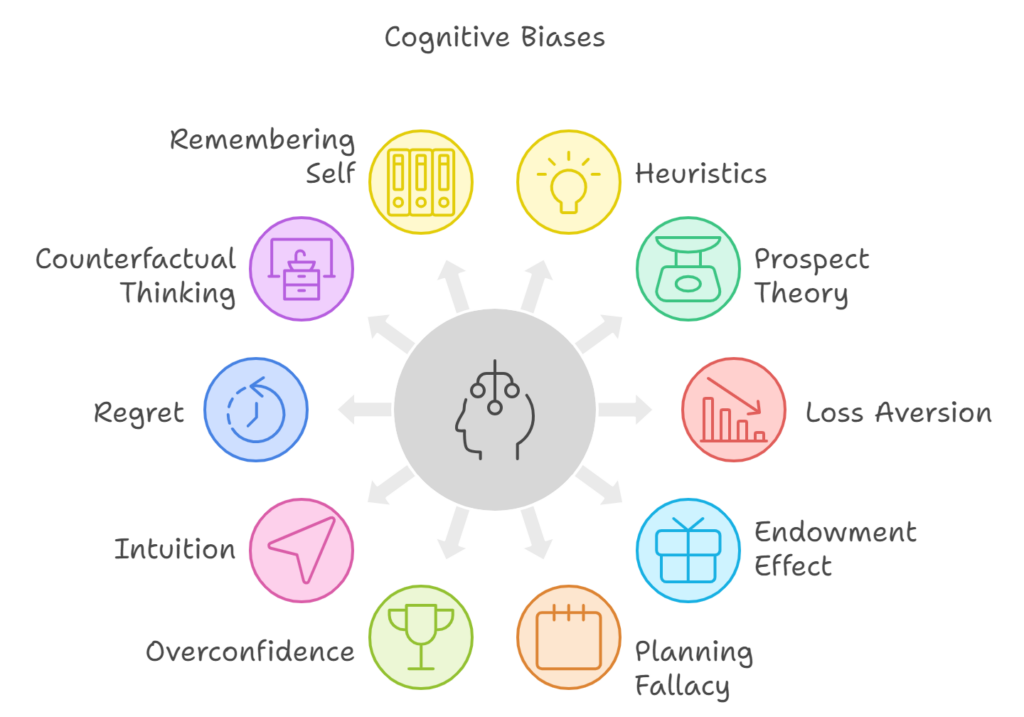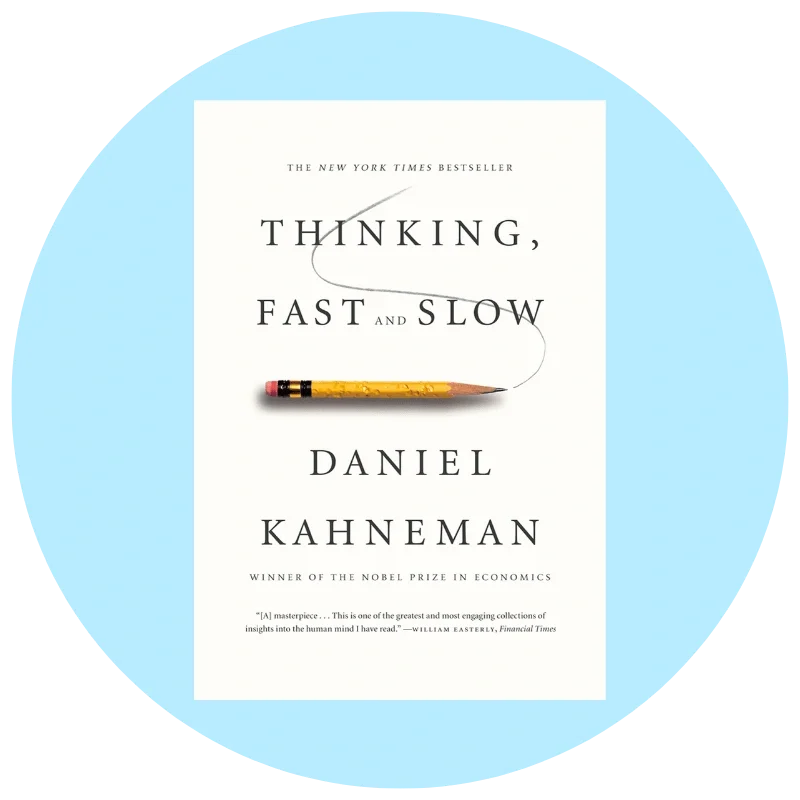11 Key Takeaways from Thinking, Fast and Slow by Daniel Kahneman
Table of Contents
- The Two Systems of Thinking: System 1 and System 2
- Cognitive Biases and Heuristics
- The WYSIATI Principle: What You See Is All There Is
- The Prospect Theory and Loss Aversion
- The Endowment Effect
- The Planning Fallacy
- Overconfidence and the Illusion of Understanding
- The Framing Effect
- The Role of Intuition in Expert Judgment
- Regret and Counterfactual Thinking
- Remembering Self vs. Experiencing Self

1. The Two Systems of Thinking: System 1 and System 2
Kahneman introduces two modes of thought: System 1 (fast, automatic, and often subconscious) and System 2 (slow, deliberate, and conscious). System 1 helps us make quick judgments, such as reading emotions or simple math, but is prone to biases and errors. System 2 is used for more complex decisions, like problem-solving or logical analysis, but requires more mental effort.
Example:
When seeing a picture of an angry face, System 1 quickly interprets it as a sign of danger without any conscious effort.
2. Cognitive Biases and Heuristics
Heuristics are mental shortcuts or rules of thumb that help simplify decision-making. However, they often lead to cognitive biases—systematic errors in thinking. Kahneman explores several biases such as the availability heuristic (relying on immediate examples that come to mind) and anchoring bias (being influenced by an initial piece of information).
Example:
When asked whether Gandhi lived past 114, people tend to guess closer to 114 because of the anchor provided, even though it’s irrelevant.
3. The WYSIATI Principle: What You See Is All There Is
System 1 leads us to focus on available information and ignore what we do not see, making quick conclusions without considering all the facts. Kahneman calls this “What You See Is All There Is” (WYSIATI), which can result in overconfidence and poor decisions due to the neglect of missing information.
Example:
If someone is kind during a first meeting, you might assume they are generally kind without knowing how they behave in other situations.
4. The Prospect Theory and Loss Aversion
Kahneman’s Nobel Prize-winning Prospect Theory suggests that people value gains and losses differently, with losses having a greater emotional impact than an equivalent amount of gain—known as loss aversion. This explains why people are often risk-averse when it comes to potential gains but will take risks to avoid losses.
Example:
The pain of losing $100 is more intense than the pleasure of winning $100, which can lead people to avoid risks unnecessarily.
5. The Endowment Effect
The endowment effect is the tendency for people to overvalue things simply because they own them. Once we possess something, we feel its value is higher than if we did not own it, which can lead to irrational decision-making in buying and selling.
Example:
A person might demand more money to sell a mug they own than they would be willing to pay for it in a store.
6. The Planning Fallacy
People tend to underestimate the time, costs, and risks of future actions while overestimating the benefits, leading to overly optimistic plans. This is known as the planning fallacy. Kahneman emphasizes the importance of considering “base rates” (average outcomes) rather than focusing on specific scenarios when making plans.
Example:
Most home renovation projects take longer and cost more than initially planned because people fail to account for potential setbacks.
7. Overconfidence and the Illusion of Understanding
Humans are often overly confident in their judgments and abilities, even when they lack sufficient knowledge. This overconfidence stems from the illusion of understanding and hindsight bias—the belief that events are more predictable after they have occurred.
Example:
After a stock market crash, people often claim they “knew it was going to happen,” even though predicting it beforehand would have been much more difficult.
8. The Framing Effect
Decisions can be significantly influenced by how information is presented or “framed.” The same choice may appear more or less appealing depending on whether it is framed as a gain or a loss. This effect plays a critical role in marketing, politics, and everyday choices.
Example:
People are more likely to choose a medical treatment when told it has a “90% survival rate” than when told it has a “10% mortality rate,” even though both statements convey the same information.
9. The Role of Intuition in Expert Judgment
While experts can develop accurate intuitions in certain environments (where feedback is regular and reliable), intuition is not always trustworthy. In many situations, System 1 can lead to overconfident and erroneous decisions, particularly in unpredictable environments.
Example:
A firefighter may accurately sense danger based on experience (expert intuition), but an economist predicting market trends is less likely to be accurate due to the unpredictability of the environment.
10. Regret and Counterfactual Thinking
People often engage in counterfactual thinking—imagining alternative scenarios that could have occurred but didn’t. This leads to feelings of regret, especially when the decision-making process is perceived as flawed. Kahneman highlights that regret can be a powerful motivator in decision-making.
Example:
Example:
Missing a flight by five minutes feels more regretful than missing it by an hour, as it’s easier to imagine scenarios where the outcome could have been different.
11. Remembering Self vs. Experiencing Self
Kahneman distinguishes between the “experiencing self” (the self that lives in the moment) and the “remembering self” (the self that recalls past experiences). The two selves often have different perceptions of happiness and satisfaction, with the remembering self prioritizing peak moments and endings over the duration of experiences.
Example:
A vacation with one bad ending day is often remembered less fondly than a vacation with a great final day, even if the overall experience was similar.
If you’re looking to transform your mindset and improve your productivity, there are some powerful books you should explore. Deep Work emphasizes the value of focused work to achieve remarkable results. To unlock financial success, Think and Grow Rich provides proven strategies for wealth and prosperity. Thinking, Fast and Slow offers insights into how we make decisions, exploring both our rapid and slow thinking processes. For strategies on gaining influence, delve into The 48 Laws of Power. To unlock success in all areas of life, The Success Principles provides a roadmap for achievement. Lastly, Mindset explores the power of adopting a growth mindset for personal and professional development. Dive into these books for transformative life changes!

